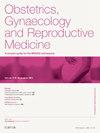The clinical impact and management of premenstrual syndrome
Q3 Medicine
Obstetrics, Gynaecology and Reproductive Medicine
Pub Date : 2025-02-01
DOI:10.1016/j.ogrm.2024.11.001
引用次数: 0
Abstract
Premenstrual syndrome (PMS) is a condition characterized by psychological, physical and behavioural symptoms occurring in the luteal phase of the normal menstrual cycle but resolves shortly after menstruation. Around 40% of women experience symptoms of PMS and of these 5–8% suffer from severe PMS including premenstrual dysphoric disorder (PMDD), a debilitating condition with severe emotional and physical symptoms and functional impairment. Premenstrual syndrome is effectively related to hormonal changes in the menstrual cycle, supported by the absence of PMS prior to puberty, during pregnancy, and after the menopause. Diagnosis is aided by reviewing symptoms in the Daily Record of Severity of Problems (DRSP) questionnaire. Management is centred around lifestyle modifications, cognitive behavioural therapy and pharmacological treatment. This article is a review of the clinical impact of premenstrual syndrome and its management strategies.
经前综合征的临床影响及处理
经前综合症(PMS)是一种以心理、身体和行为症状为特征的疾病,发生在正常月经周期的黄体期,但在月经后不久就会消退。大约40%的妇女有经前综合症的症状,其中5-8%患有严重的经前综合症,包括经前烦躁不安(PMDD),这是一种使人衰弱的疾病,伴有严重的情绪和身体症状以及功能障碍。经前综合症与月经周期中的激素变化有关,在青春期前、怀孕期间和绝经后没有经前综合症。诊断是通过回顾问题严重程度的每日记录(DRSP)问卷中的症状来辅助的。管理以生活方式改变、认知行为疗法和药物治疗为中心。本文就经前综合征的临床影响及其治疗策略作一综述。
本文章由计算机程序翻译,如有差异,请以英文原文为准。
求助全文
约1分钟内获得全文
求助全文
来源期刊

Obstetrics, Gynaecology and Reproductive Medicine
Medicine-Obstetrics and Gynecology
CiteScore
0.90
自引率
0.00%
发文量
67
期刊介绍:
Obstetrics, Gynaecology and Reproductive Medicine is an authoritative and comprehensive resource that provides all obstetricians, gynaecologists and specialists in reproductive medicine with up-to-date reviews on all aspects of obstetrics and gynaecology. Over a 3-year cycle of 36 issues, the emphasis of the journal is on the clear and concise presentation of information of direct clinical relevance to specialists in the field and candidates studying for MRCOG Part II. Each issue contains review articles on obstetric and gynaecological topics. The journal is invaluable for obstetricians, gynaecologists and reproductive medicine specialists, in their role as trainers of MRCOG candidates and in keeping up to date across the broad span of the subject area.
 求助内容:
求助内容: 应助结果提醒方式:
应助结果提醒方式:


